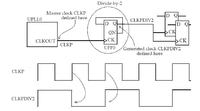maxwell232
Newbie level 3
(1) generated clock
(2) multiple clock
(3) ideal clock
(4) propagated clock
i am really confused by them, would you tell me what the difference is between them?
thanks a lot
Added after 4 minutes:
by the way, if i want to understand those concepts clearly, what should i learn? STA, CTS or other things? would you give me some advice?
(2) multiple clock
(3) ideal clock
(4) propagated clock
i am really confused by them, would you tell me what the difference is between them?
thanks a lot
Added after 4 minutes:
by the way, if i want to understand those concepts clearly, what should i learn? STA, CTS or other things? would you give me some advice?
